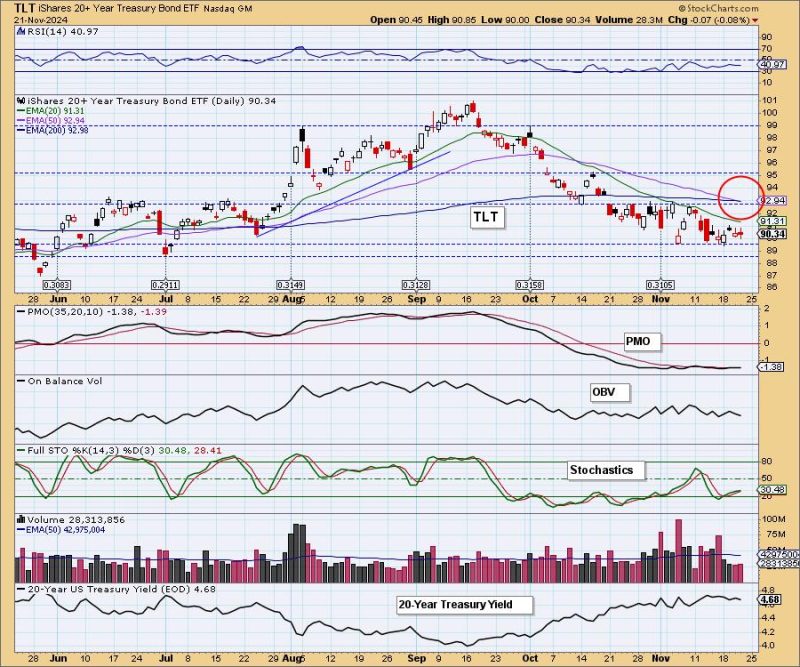In the world of finance, market signals play a crucial role in guiding investors and traders on potential trends and price movements. One such signal that often garners attention is the death cross sell signal, which has recently emerged in the bond market. As bond yields rise and fall, their movements can provide valuable insights into the overall health of the economy and the direction of future interest rates.
The death cross sell signal occurs when a shorter-term moving average crosses below a longer-term moving average. In the case of bonds, this signal can indicate a potential downturn in bond prices and an increase in yields. Bond yields and prices have an inverse relationship, meaning that as yields rise, bond prices fall, and vice versa.
The recent occurrence of the death cross sell signal in the bond market has attracted significant attention from investors and analysts alike. With the Federal Reserve hinting at potential interest rate hikes in the near future, many are interpreting this signal as a sign that bond prices could be heading lower in the coming months.
The implications of the death cross sell signal extend beyond just the bond market. As bond yields rise, borrowing costs for businesses and consumers can also increase. This could lead to a slowdown in economic activity as companies may find it more expensive to borrow money for investments and consumers may cut back on spending.
Investors who closely follow market signals such as the death cross sell signal can use this information to make informed decisions about their investment portfolios. For those with exposure to the bond market, it may be prudent to reassess their holdings and consider shifting towards assets that could benefit from rising interest rates, such as certain types of stocks or commodities.
Ultimately, the emergence of the death cross sell signal in the bond market serves as a reminder of the interconnected nature of financial markets and the importance of monitoring signals and trends to stay ahead of potential market movements. By staying informed and proactive, investors can position themselves to navigate changing market conditions and make well-informed decisions to protect and grow their wealth.




























